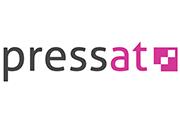The First Comprehensive Performance Test Of UK Mobile Operators And Their Mvnos
London, UK : The UK's four mobile operators – Three, O2, Vodafone and EE – offer a slightly better service than the cheaper third party operators using their networks but most customers are unlikely to notice the difference. This is the key finding of the first large-scale performance test to compare the performance of the UK's mobile network operators (MNOs) against the mobile virtual network operators (MVNOs) using their infrastructure.
40,000 tests were carried out using the SignalTracker mobile app across the UK in a range of urban, suburban and rural locations.
SignalTracker, a partner service from spectrum policy experts PolicyTracker, compared Vodafone to Lebara Mobile, EE to LycaMobile, Three to iD Mobile and O2 to giffgaff to find out just how download speed (Mbps) differs between these providers. All the tested MVNOs use the existing networks of the mobile network operators (MNOs) and are generally cheaper.
Our tests focused on Central London as an urban case study; south London and south Birmingham as suburban tests and the Isle of Skye, Lincolnshire and Cumbria for our rural tests. We found that in the urban and suburban tests, all networks are consistently achieving more than the 20 Mbps download speed needed for everyday usage.
In simple terms, it is unlikely that consumers will notice the difference between network operators and MVNOs, as download speeds are often separated by less than 10 Mbps.
However, Three and O2 were considerably faster than their partner MVNOs. In our suburban tests Three averaged 105 Mbps download speed against just 26 Mbps from iD Mobile. Similarly, giffgaff fell consistently short of the service provided by O2. In our suburban tests, O2 averaged 56 Mbps download speed against just 41 Mbps on giffgaff: the MVNO was also beaten for speed in the urban tests by O2. Overall, our fastest speeds were on Three and our slowest were on iD.
Regarding reliability, we found that MVNOs were more likely to suffer failed tests than MNOs. When this metric is taken into account, MNOs offer a better service even though their download speeds are very similar.
In the case of Vodafone, we experienced test failure in 1% of cases across our urban and rural test areas. On its MVNO Lebara, this rose to 24% and 19%. More noticeable was the difference between O2 and giffgaff, with only 4% average test failure across all O2 tests versus 43% average test failure on giffgaff - close to half.
The performance gap between network operators and MVNOs is inconsistent – in South London O2 and giffgaff had similar speeds but O2 massively outpaced giffgaff in our Birmingham tests.
SignalTracker also analysed the mobile bands being used by network operators and their MVNOs to see if this explained differences in performance. iD has slower speeds than Three because it lacks access to the best performing mobile bands but in other pairings, this doesn't to affect overall performance.
For consumers, what matters the most is value – our report highlights several MVNOs who offer a very similar service to MNOs at much cheaper prices.
While we do believe MVNOs offer generally better value, we also factored in the existence of 5G standalone (5G SA), the ultra-fast service offered by EE, Vodafone and O2.
No MVNO currently has access to 5G SA and when we add those results into our comparison, it makes a big difference and can even see average download speeds topping 100 Mbps.
For customers streaming, using VR and AR technology, looking to game on the go or download large files frequently, 5G standalone provides an advantage for these tasks over any MVNO.
Read the full report here to learn more about our findings and methodology by completing this form .

Legal Disclaimer:
MENAFN provides the
information “as is” without warranty of any kind. We do not accept
any responsibility or liability for the accuracy, content, images,
videos, licenses, completeness, legality, or reliability of the information
contained in this article. If you have any complaints or copyright
issues related to this article, kindly contact the provider above.
Most popular stories
Market Research

- What Does The Europe Cryptocurrency Market Report Reveal For 2025?
- United States Kosher Food Market Long-Term Growth & Forecast Outlook 20252033
- Utila Triples Valuation In Six Months As Stablecoin Infrastructure Demand Triggers $22M Extension Round
- Meme Coin Little Pepe Raises Above $24M In Presale With Over 39,000 Holders
- FBS Analysis Highlights How Political Shifts Are Redefining The Next Altcoin Rally
- 1Inch Becomes First Swap Provider Relaunched On OKX Wallet





















Comments
No comment